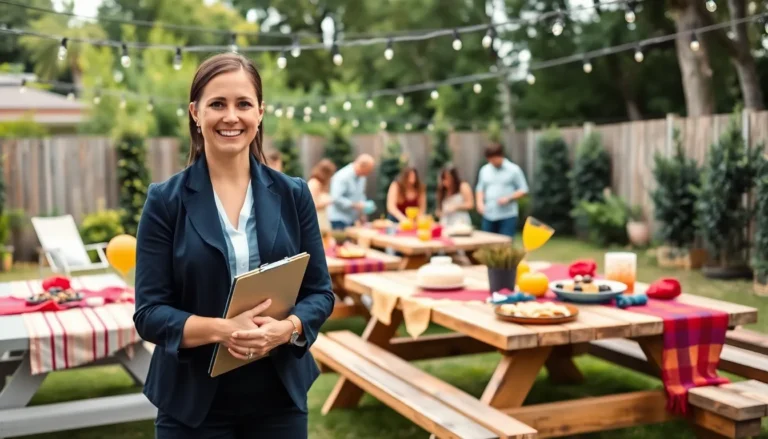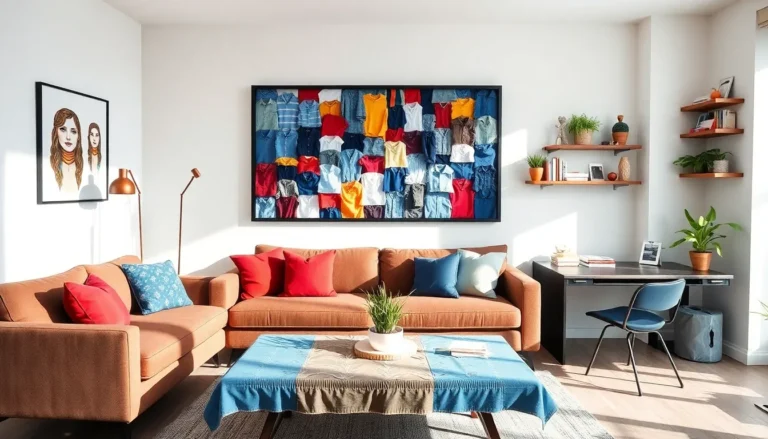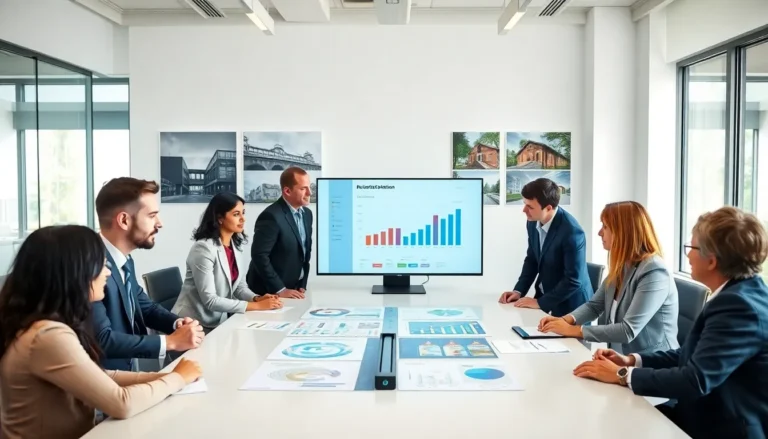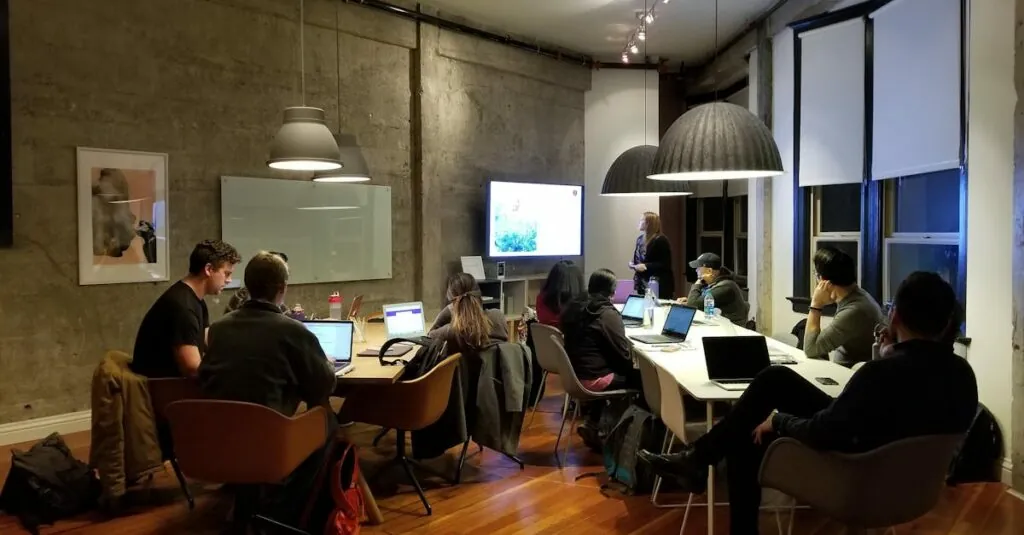Table of Contents
ToggleIn the world of interior design, first impressions matter. A well-crafted logo isn’t just a pretty picture; it’s the face of a brand that tells a story. It’s like the perfect throw pillow—subtle yet essential for tying the whole room together. So, why settle for a boring logo when you can create a visual masterpiece that reflects creativity and style?
Understanding Interior Design Logos
A well-crafted interior design logo serves as a visual anchor for a brand. Designers must appreciate its significance beyond mere aesthetics.
Importance of a Good Logo
Great logos convey a brand’s message quickly and effectively. They help create instant recognition, driving brand loyalty among clients. A memorable logo fosters a professional image, which is essential for attracting high-end clients. Designers enhance their credibility through effective visual identity. Understanding the target audience allows designers to create logos that resonate emotionally, increasing their impact significantly.
Key Elements of Interior Design Logos
Unique typography captures attention and reflects the brand’s personality. Color choice evokes specific emotions, making it crucial for effective logo design. Simplicity ensures the logo stays memorable and versatile across various applications. Imagery aligned with interior design themes can express a specific style or service, enhancing the brand’s narrative. Balance between visual elements maintains aesthetic appeal, creating an inviting first impression for potential clients.
Trending Interior Design Logo Ideas
Exploring current trends provides insight into effective interior design logo concepts. Designers increasingly gravitate towards styles that reflect contemporary tastes and values.
Minimalist Designs
Minimalist designs emphasize simplicity and clarity. They often utilize clean lines, ample white space, and a limited color palette. Logos in this style communicate professionalism and sophistication. Unique typography often stands out in minimalist logos, ensuring brand names remain memorable. This approach appeals to clients who appreciate elegance and modernity.
Vintage and Retro Aesthetics
Emphasizing nostalgia, vintage and retro aesthetics capture timeless charm. Classic fonts and muted color schemes evoke a sense of history and warmth. These logos often resonate with clients seeking a unique identity that marries tradition with modern interior trends. Incorporating elements like decorative frames can enhance visual appeal, making logos more inviting. Designers successfully blend contemporary practices with vintage inspirations, creating distinct brand identities.
Use of Natural Elements
Brands increasingly highlight natural elements in their logos, reflecting a commitment to sustainability. Incorporating organic shapes and earthy colors fosters a connection to nature. Many logos use motifs like leaves or wood textures, embodying eco-friendly design principles. This approach appeals to environmentally conscious clients drawn to sustainability. A logo featuring natural elements creates an inviting, calming presence that resonates with modern living spaces.
Tips for Creating Your Own Interior Design Logo
Creating a memorable interior design logo involves careful consideration of various elements. Focusing on the choices below enhances the overall impact of the brand.
Choosing the Right Colors
Color selection significantly influences the perception of an interior design logo. Warm colors like red and orange evoke energy and creativity, while cool colors such as blue and green communicate calmness and professionalism. To appeal to clients, designers should align color choices with brand values and target audience preferences. Neutral tones often enhance versatility and sophistication, providing a timeless touch. Creating cohesion between color schemes and branding fosters an emotional connection with clients.
Selecting Appropriate Fonts
Font choice plays a crucial role in logo design, as it represents a brand’s personality. Serif fonts often convey tradition and elegance, while sans-serif options suggest modernity and minimalism. Designers can aim for unique typefaces that stand out yet remain legible. Combining different font styles can add depth, but consistency is essential to maintain clarity. Selecting the right font ensures that the logo communicates its intended message effectively and resonates with the target market.
Examples of Successful Interior Design Logos
Successful interior design logos reflect brand identity and resonate with targeted clients. They use unique design elements to create memorable impressions.
Case Study 1
A prime example is the logo of a boutique design firm that emphasizes elegance and modernity. This logo features sleek typography alongside an abstract emblem representing a stylized room. The color palette consists of muted tones, evoking sophistication and trust. Clients appreciate its simplicity, which communicates professionalism without overwhelming visual clutter. This deliberate design choices contribute to instant recognition and a strong brand association.
Case Study 2
Another notable example is a firm specializing in eco-friendly designs. Its logo incorporates green shades and leaf motifs to symbolize sustainability. A custom sans-serif typeface enhances readability and aligns with contemporary aesthetics. The combination of natural imagery and organic colors attracts environmentally conscious clients. Strong visual elements convey the firm’s commitment to both design excellence and environmental responsibility. This approach effectively reinforces brand values and connects emotionally with the target audience.
A well-crafted interior design logo is essential for establishing a strong brand identity. It goes beyond aesthetics to convey a brand’s essence and values effectively. By embracing creativity and current trends, designers can create memorable logos that resonate with their target audience.
Choosing the right colors and typography plays a crucial role in evoking emotions and fostering connections with clients. As demonstrated through successful case studies, an effective logo not only enhances a professional image but also drives brand loyalty. Ultimately, investing time and thought into logo design can significantly impact a designer’s success in a competitive market.







